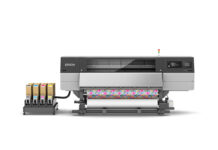When making a decision on remodeling your professional office, one of the most important parts of the process is ensuring your facility complies with the Americans with Disabilities Act (ADA). The last comprehensive ADA Standards for Accessible Design was issued six years ago.
Nowadays, if a customer is remodeling an office six years ago, or if a client is renovating an older building, they may believe they are still legal from when their facilities were built. But in reality, their building may be illegal which could lead to heavy fines and penalties.
What You Should Keep in Mind During Retrofitting and Remodeling
Restrooms. All toilets must meet ADA codes unless the restroom is accessed through a private office, or is not for common or public use and is intended for use by a single occupant. Recently in New York City, Mayor de Blasio issued Executive Order 16 for gender neutral restroom signage. A few options may be allowed, but the restroom must meet ADA codes when the options are removed.
Reception Counters. Generally speaking, a reception counter stands at forty-two inches. However ADA regulations state that an area standing no higher than thirty-four inches and no less than thirty-six inches wide must be provided. From a design standpoint, we recommend a receptionist’s work surface contents are in full view by offering the shorter counter for those using wheelchairs and a higher counter for individuals not required to use a wheelchair.
Signage. It’s not a requirement for all signs to be both visual and tactile with Braille. Exceptions of this rule include company names and logos, addresses, and directories of buildings. The standard height to the baseline for tactile signage is a range of forty-eight inches minimum and sixty inches maximum.
Door Clearances. When it comes to door clearances, there are two important factors to consider. Doors must provide a clear width of thirty-two inches and must provide maneuvering clearances for those using wheelchairs. Though there are many standards for maneuvering clearances, the most basic for a front approach is eighteen inches clear space at the pull side of the door and twelve inches clear space at the push side of the door. The codes cover all types of doors, consisting of hinged, revolving, revolving, sliding, automatic, and manual.
Lunchrooms. In a lunchroom, the common challenge is finding smaller, compatible appliances, such as dishwashers and under-counter refrigerators. While more manufacturers are becoming more conscious of code heights, sinks and the rent of the counters are installed at two different heights. Microwaves may not be placed in an upper cabinet and offered at an ADA-accessible height.
These are the most common aspects of a building but there are still many more codes that needs to be met. Individuals in wheelchairs and those with disabilities have to be looked into such those that are deaf or blind. Prior to starting your project, you should probably consult your architect or designer for a more cost effective approach to your design.
—Diana Di Raimondo
Socia Media and Marketing Specialist at GDS Architectural Signage Solutions











